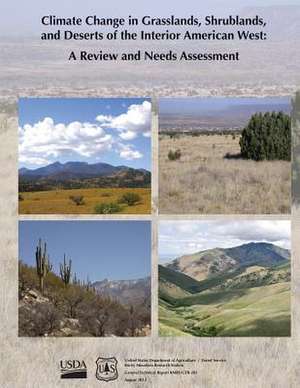Climate Change in Grasslands, Shrublands, and Deserts of the Interior American West
Autor U. S. Department of Agriculture, Forest Service Editat de Deborah M. Finchen Limba Engleză Paperback
Preț: 115.65 lei
Nou
Puncte Express: 173
Preț estimativ în valută:
22.13€ • 23.66$ • 18.45£
22.13€ • 23.66$ • 18.45£
Carte disponibilă
Livrare economică 27 martie-10 aprilie
Preluare comenzi: 021 569.72.76
Specificații
ISBN-13: 9781480146600
ISBN-10: 1480146609
Pagini: 146
Dimensiuni: 216 x 279 x 8 mm
Greutate: 0.35 kg
Editura: CreateSpace Independent Publishing Platform
ISBN-10: 1480146609
Pagini: 146
Dimensiuni: 216 x 279 x 8 mm
Greutate: 0.35 kg
Editura: CreateSpace Independent Publishing Platform
